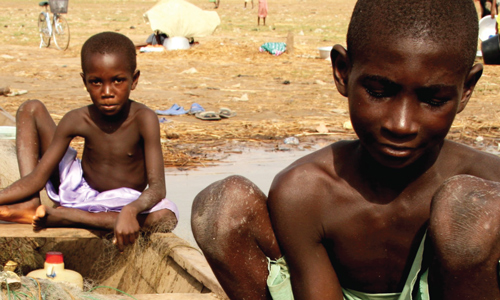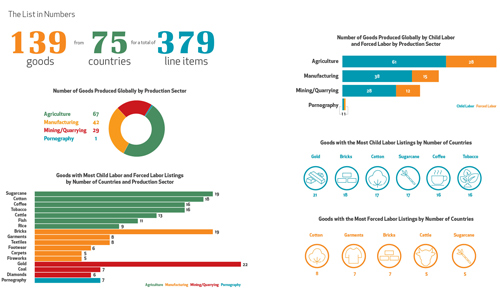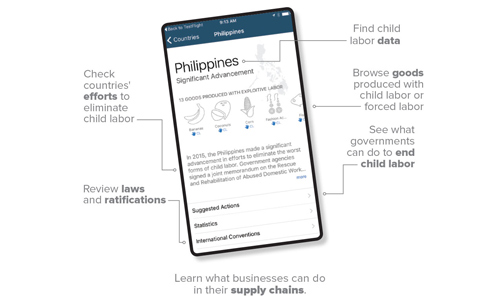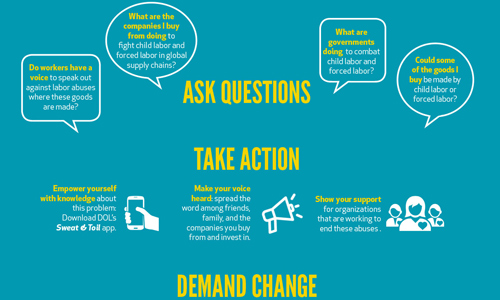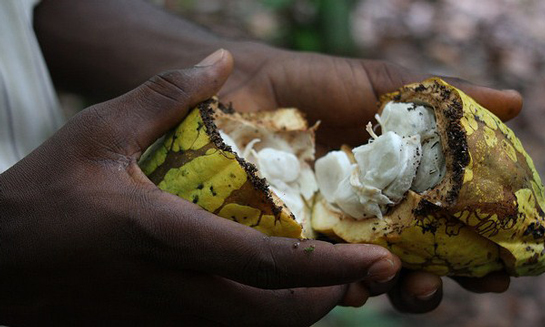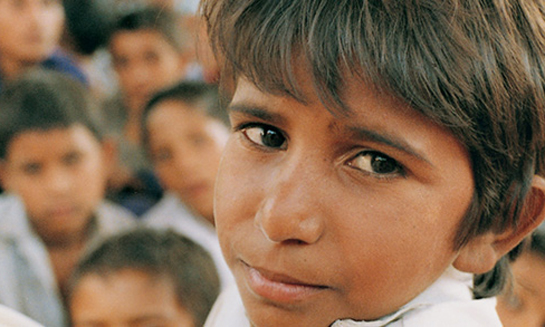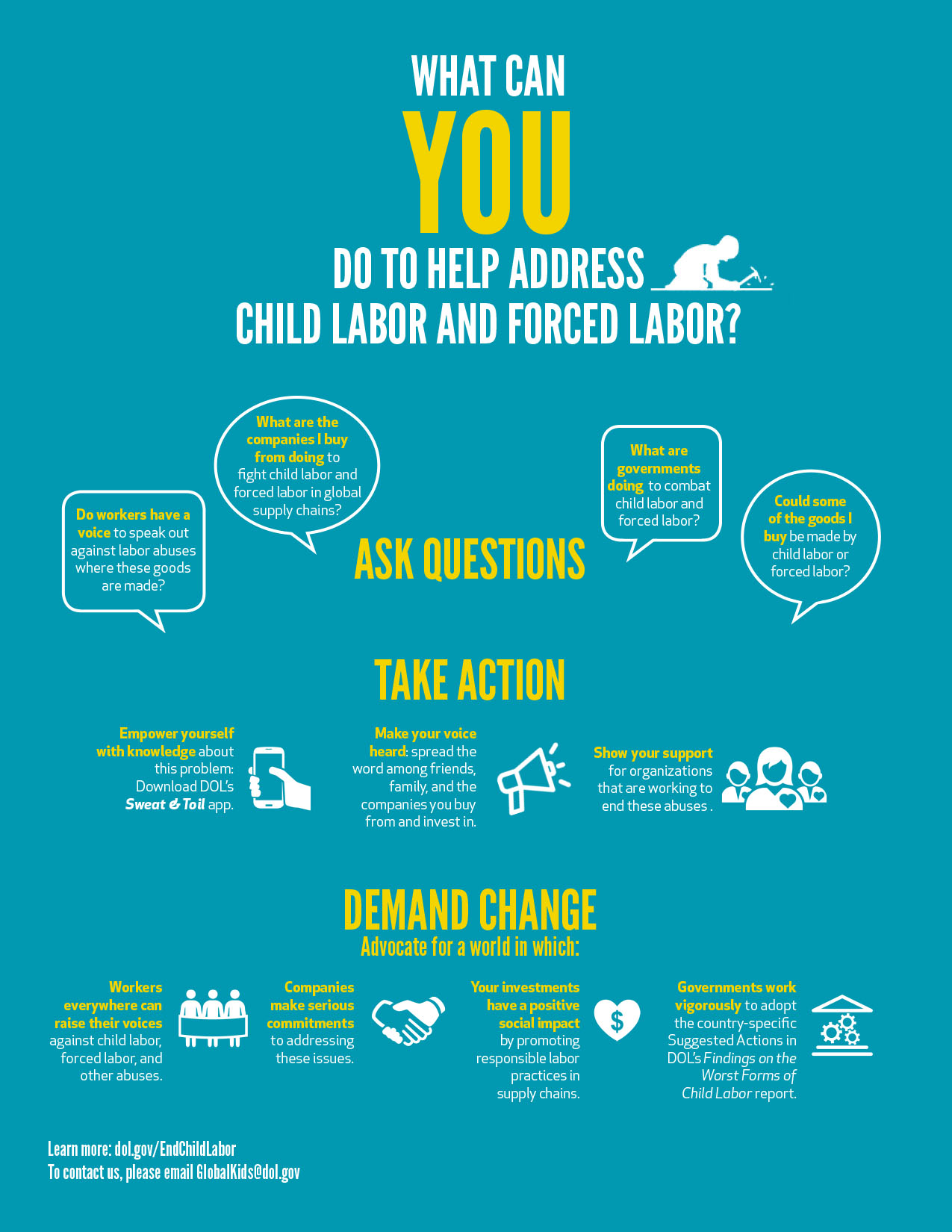Every day, millions of men, women, and children around the world are vulnerable to abuse and exploitation in the workplace. Global estimates put the number of child laborers at 168 million, 85 million of whom work in hazardous conditions. The International Labor Organization estimates that there are at least 21 million people trapped in forced labor, including 6 million children forced into labor or sexual exploitation. Thousands of these individuals have been deceived and trafficked within their own countries or ended up in other countries to work in horrific conditions without the ability to leave.
ILAB works to protect those fundamental human rights that are the foundation of workers' dignity so that everyone can live a life free of exploitation and full of opportunity.
Our Role
The Bureau of International Labor Affairs has been working to combat child labor, forced labor, and human trafficking since 1993.
We carry out research, policy engagement, and technical cooperation to advance the elimination of these human rights abuses. ILAB produces reports on the incidence and nature of child and forced labor and efforts underway to address these problems. We assist in the development and implementation of U.S. government policy, and also engage strategically with governments, business, labor, and civil society groups to implement models that work to reduce exploitive labor practices.
ILAB also funds projects using an integrated approach that helps children attend school and supports economic opportunities for adults so that families do not need to rely on their children's labor to meet basic needs.
Child labor is work that interferes with the physical and mental development of children. This work also often interferes with children's opportunities to attend school fully or requires them to dropout of school entirely. There are still 168 million children working worldwide, 85 million in hazardous work. ILO Convention 182 on the Worst Forms of Child Labor calls on the global community, as a matter of urgency, to eradicate the use of children under 18 years of age in all forms of slavery, commercial sexual exploitation, illicit activities, and hazardous work that is likely to harm their health, safety or morals.
Our Strategy
The Bureau of International Labor Affairs has been working to eliminate the worst forms of child labor since 1993 through research, policy engagement and technical cooperation.
We have published over 30 Congressionally-mandated reports, including the Department Labor's Findings on the Worst Forms of Child Labor and a public list of goods from countries we have reason to believe are produced by child labor or forced labor. This research has informed our policy and program design to end child labor. We have funded more than 270 projects to combat child labor in over 90 countries and worked with more than 60 organizations.
In addition to working directly with children and families to provide education or financial assistance, we work with countries at the national, district and community levels to strengthen systems and services required to address child labor. Our projects have trained labor inspectors and law enforcement officials on child labor law enforcement. They have also developed community-based, child labor monitoring systems in the supply chains of key sectors.
Objectives
- Expand global knowledge on child labor, including how to better tackle the problem.
- Strengthen laws, law enforcement, coordination among government bodies, policies, and programs related to child labor, including social protection and education.
- Improve awareness of the importance of education for all children.
- Increase mobilization of a wide array of stakeholders who improve and expand economic and education opportunities for children and families.
- Increase numbers of children in school who no longer work in exploitative child labor.
The International Labor Organization's Forced Labor Convention defines forced labor as work performed against a person's will, under the threat of some form of penalty.
Forced labor takes many forms. Some victims are born into slavery, which still exists in some parts of the world. Some are trafficked. Some get trapped in endless debt through fraudulent job recruitment schemes or unreasonable pay deductions. Some are confined to workplaces through various forms of physical and psychological coercion.
The ILO estimates that there are approximately 21 million forced labor victims globally. Nearly 70% of these victims are in sectors such as agriculture, construction, domestic work and manufacturing, while 22% are in commercial sexual exploitation.
Our Strategy
ILAB works to combat forced labor around the world in a number of ways. These include:
Research: We produce and fund research reports that analyze and discuss forced labor around the world. These reports aim to raise awareness of forced labor among foreign governments, industry groups, and civil society organizations, and to spur action to combat forced labor.
Projects: We fund projects in foreign countries to address forced labor. These projects tackle forced labor in a variety of ways, including supporting local mechanisms to detect and rescue victims, building organizations' capacity to provide protection services to victims, and building government agencies' capacity to prevent forced labor and prosecute perpetrators.
Policy: We develop U.S. Government policy positions on forced labor issues and advocate for these positions in international fora, including the International Labor Organization (ILO).
Additionally, we regularly report on the extent to which our government gives effect to the principle of the elimination of all forms of forced labor, pursuant to the ILO's 1998 Declaration on Fundamental Principles and Rights at Work.
Objectives
ILO conventions call on governments to eradicate all forms of forced labor. By funding research and projects and through its policy work, ILAB plays a part in global efforts to ensure that people do not fall prey to forced labor exploitation.
Human trafficking, or Trafficking in Persons, is a crime against humanity that affects both adults and children.
The Protocol to Prevent, Suppress and Punish Trafficking in Persons, Especially Women and Children, to the United Nations Convention against Transnational Organized Crime defines human trafficking as "the recruitment, transportation, transfer, harboring or receipt of persons by means of the threat or use of force or other forms of coercion, of abduction, of fraud, of deception, of the abuse of power or of a position of vulnerability or of the giving or receiving of payments or benefits to achieve the consent of a person having control over another person, for the purpose of exploitation."
The most common forms of human trafficking occur for the purpose of labor or sexual exploitation.
Our Strategy
The Bureau of International Labor Affairs funds projects to combat exploitative child labor, including child trafficking. These projects support efforts to provide assistance to children in or at risk of the worst forms of child labor, including those that could potentially be victims of trafficking.
Pursuant to the Trafficking Victims Protection Act of 2000, as amended, the Bureau produces a List of Goods Produced by Child Labor or Forced Labor that serves as a resource for governments, business, civil society, and others. ILAB has also published an online resource, Reducing Child Labor and Forced Labor: A Toolkit for Responsible Businesses, that can help businesses combat child labor and forced labor in their global supply chains.
Objectives
- Enhance victim identification and service delivery for victims of trafficking.
- Expand public awareness of human trafficking.
- Increase engagement with governments, workers, and employers to combat human trafficking
NEWS AND EVENTS
US Department of Labor awards $4M project to address child labor in vanilla-growing areas of Madagascar
Please note: As of January 20, 2017, information in some news releases may be out of date or not reflect current policies.
US Department of Labor awards $7 million grant to Reduce Child Labor in Agriculture in Mexico
Please note: As of January 20, 2017, information in some news releases may be out of date or not reflect current policies.
US Labor Department commits $5M to fight child labor in Zambia as new partner in ‘Let Girls Learn’ initiative
Please note: As of January 20, 2017, information in some news releases may be out of date or not reflect current policies.
RESOURCES
- Fiscal Year 2016 Department of Labor Initiatives to Combat Trafficking in Persons
- Toolkit for Responsible Businesses
- Executive Order 13126 List of Products
- Open Data API
- Projects Addressing Child Labor
- Consultative Group to Eliminate the Use of Child Labor and Forced Labor in Imported Agricultural Products
- ILO Conventions and Recommendations on Child Labor
- ILO Conventions on Forced Labor
- ILO New Protocol on Forced Labor
- Hard to See, Harder to Count: Survey Guidelines to Estimate Forced Labor of Adults and Children
- End Trafficking Now, Presidential Actions
- United Nations Office on Drugs and Crime, Human Trafficking
FEATURED
Learn More on our Blog: 3 Things You can Do to Help End Child Labor

